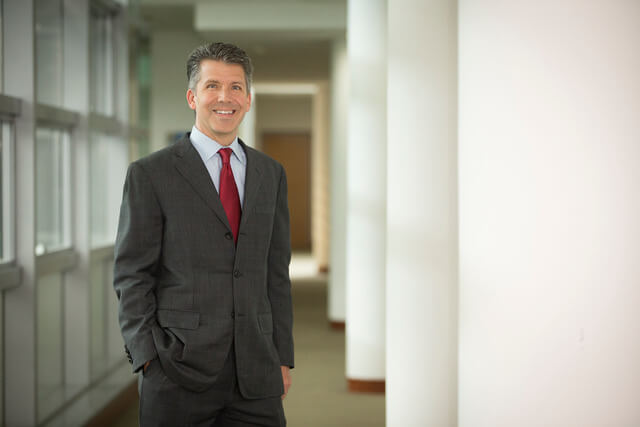By the SMU Social Media Team
In a commercial environment that demands constant growth and higher productivity, balancing the needs of employees with the needs of the business is always complex. However, some companies seem to manage an almost impossible equilibrium of keeping satisfaction and motivation up, without sacrificing performance.
A new study, by Professor Richard Smith, Deputy Dean of SMU Lee Kong Chian School of Business, and Mr Benjamin Ho, Senior Consultant at the Great Place to Work Institute Singapore, looked at Singaporean companies that have been identified as ‘great’ workplaces. They came to three conclusions—that strategic human resource leadership has an impact on a company’s bottom line; that diversity, when seen as a strategic initiative and properly executed, drives innovation; and that offering opportunities for learning and development maximises performance and returns.
Human resource professionals have been asking for a seat at the management “top table” for years, Prof Smith says. There is evidence that this is starting to happen, as businesses recognise the strategic importance of managing, hiring and retaining talent. However, he notes, this does not mean that the entire HR function has necessarily been elevated as well.
“We must recall that the HR function was born out of regulatory compliance and labour union management. Much of what happens in the HR department in most organisations is not strategic and very administrative.”
Many organisations have struggled to develop ‘strategic’ human resource professionals, Prof Smith says. “Being a good HR administrative manager does not prepare one for being Chief Human Resources Officer any more than being a good accountant prepares one for being the CFO. This challenge is highlighted when we recognise that more than 60 per cent of all Chief HR Officers are hired from external sources or brought into HR from the business.”
Prof Smith suggests that HR professionals can address this issue by continuing to further their business education throughout their careers. Many executives today tend to have some form of masters degree, such as an MBA, and HR professionals “lose credibility in the business when they do not speak the language of finance and understand core areas of business.”
Developing leadership abilities, and exposure to other skill areas, such as sales, consulting and coaching, is also valuable, he adds.
Given the nature of business today, HR professionals should also seek out experience in other countries, in order to gain a regional or global perspective, Prof Smith says. “Regardless of what industry or sector we operate, HR leaders must have a global perspective and be externally oriented in working across borders.”
The profession as a whole needs to put more focus on certification, Prof Smith says. “Part of the challenge in HR is the lack of definition and guidelines around the profession, which sometimes leads to perceptions that ‘Anyone can do that HR job’.”
The idea that HR is straightforward, and first and foremost a job that depends on people skills above all, is an outdated one, according to Prof Smith.
“This may sound at odds with the idea that HR people are the ‘People People’,” he says. “For those that chose the profession because: ‘I like working with people,’ I am sorry to tell you that the future of HR is a lot more about math than people. HR analytics is a growing field and having a strong orientation on evidence-based management and analytics will be a key for the future.” The focus on analytics may begin to impact HR practices and the profession over time.
Human resources practices also face challenges as company structure changes in line with the growth of the ‘sharing economy’, in which workforces are expected to become more dispersed and employment to become more flexible.
“While these flexible models are not new, the use of these models by large organisations is a bit unique and raises new questions for HR leaders,” Prof Smith says. “In addition to these employment models, we also see rising use of outsourcing and strategic alliances for other types of work that historically was performed by full-time employees. These new models begin to blur the line of the corporate boundary—where do we draw the line when it comes to culture, customer experience, service expectations, and talent management?”
The answer to this is complex, Prof Smith explains, but there are some approaches that seem to deliver results, such as taking “an inclusive approach” to suppliers and affiliates and being very clear about expectations and roles.
Although there are few easy answers, these are investments worth making. When compared to the market average, the Fortune 100 Best Companies to Work For have outperformed the rest for almost two decades.
In their study, Prof Smith and Mr Ho found that 95 per cent of organisations recognised as ‘great’ have development plans that are composed and executed for all levels of employees. Eighty-nine per cent have a clearly defined diversity strategy, compared to 62 per cent in unranked organisations. Although successful organisations do share these common traits, Prof Smith says that it is important that businesses do not just mimic, and instead take “a context-specific approach to building a positive workplace”.
“In other words, we should not copy and paste what others are doing. Often times we look at successful firms and want to copy their practices, yet our context is different and unique. Identify the things that are important in your organisation and work to create a positive workforce in a way that is special and considerate for that place and time,” he says. “After all, if we truly believe that human capital is a potential competitive advantage, then we should treat our work practices as unique and confidential—like the secret formula for our products or services. When we can take this strong approach, then we will have demonstrated the strategic value of human resource management and then we just might be creating a Great Place to Work.”
Read more about the research here (pg 12):









